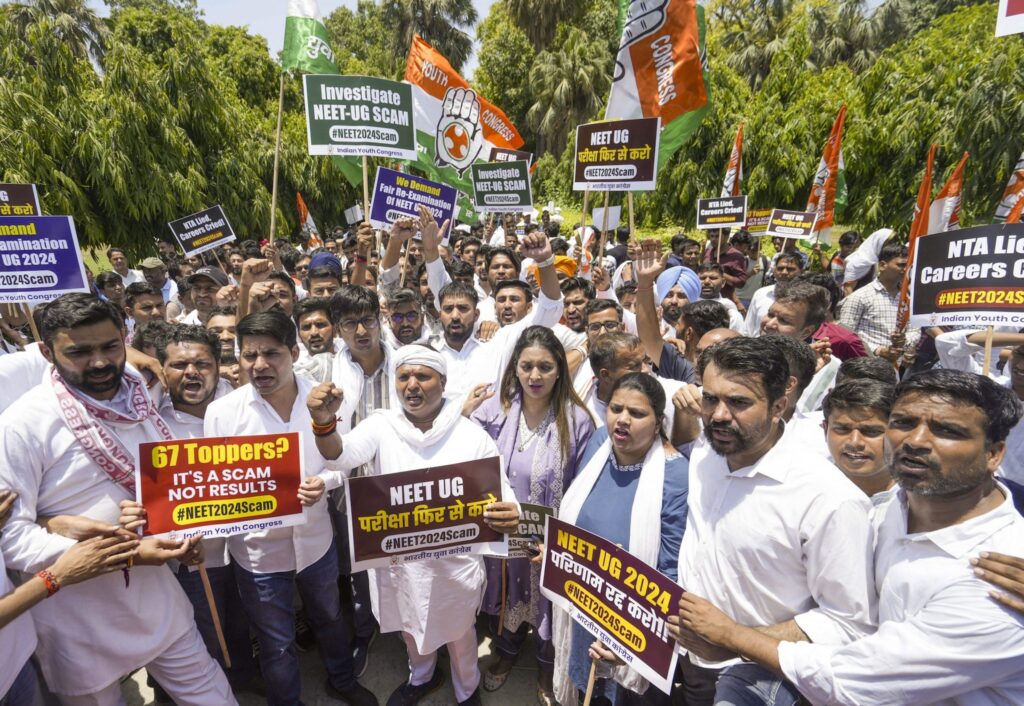LESSONS UNLEARNED: THE DEEP-SEATED ISSUE IN INDIA’S EDUCATION SYSTEM

India, a country with a rich history and a rapidly growing economy, faces a significant challenge in its education system. Despite various reforms and policies aimed at improving education, the system remains plagued by numerous issues that hinder its effectiveness. The recent results of the NEET exam orchestrated by the National Testing Agency (NTA) has sent shock waves through the education sector, undermining the integrity of one of India’s most critical entrance examinations. Media is discussing the widespread malpractice, including the leaking of exam papers, manipulation of results, and even impersonation during the test. This breach of trust has jeopardized the future of thousands of aspiring medical students who rely on NEET as a fair means to secure their academic and professional aspirations.

Reports suggest that a network of individuals, including NTA officials, coaching centers, and candidates, colluded to gain unfair advantages, raising serious concerns about the credibility of the entire examination system.
Parents and students across the country have expressed their outrage, demanding a thorough investigation and strict punitive actions against those involved. This incident has not only tarnished the reputation of the NTA but also raised questions about the security measures in place for conducting national-level exams. Educational experts emphasize the urgent need for reforms, suggesting the implementation of advanced technology for exam monitoring, stringent background checks for officials, and the establishment of an independent body to oversee the examination process. The government’s response to this crisis will be crucial in rebuilding trust and ensuring that future exams are conducted with the utmost integrity and fairness.
When Indian Education system is compared with Global standards , we will found that the most pressing issues facing the Indian education system is the lack of adequate infrastructure and resources. Many schools, particularly in rural areas, lack basic facilities such as clean drinking water, proper sanitation, and sufficient classrooms. According to a report by the Ministry of Education, approximately 40% of schools in India do not have access to electricity, and 30% lack functional toilets.
This inadequacy extends to educational resources as well. Schools often suffer from a shortage of textbooks, teaching aids, and technology. The lack of access to modern teaching tools hampers the quality of education and limits students’ exposure to innovative learning methods. Consequently, students in rural and underprivileged areas are at a significant disadvantage compared to their urban counterparts.
The quality of education in India is also compromised by the shortage of qualified teachers. Many schools operate with a high student-to-teacher ratio, making it difficult for teachers to provide individual attention to students. Furthermore, a significant number of teachers lack the necessary qualifications and training to deliver effective education.According to the Annual Status of Education Report (ASER) 2020, only 50% of teachers in government schools possess the required qualifications. The result is a cycle of poor teaching quality, leading to subpar student performance and low educational outcomes.
The Indian education system has long been criticized for its emphasis on rote learning and memorization rather than fostering critical thinking and creativity. The curriculum is often rigid and exam-eccentric, prioritizing the ability to recall information over the understanding and application of concepts.This approach stifles creativity and discourages students from engaging in analytical thinking. It also fails to prepare students for real-world challenges, as they are not trained to think independently or solve problems indicatively. The focus on rote learning contributes to high levels of student stress and anxiety, as academic success is often measured solely by exam performance.Educational inequality is a significant issue in India, with access to quality education heavily influenced by socioeconomic status, gender, and geography. Children from low-income families, girls, and those living in rural areas are disproportionately affected by these disparities.The ASER 2020 report highlights that only 50% of rural children in grade five can read at a grade two level, compared to 70% of their urban counterparts. Gender disparities are also evident, with girls often facing barriers to education due to societal norms and expectations. Additionally, the digital divide has further exacerbated educational inequality, particularly during the COVID-19 pandemic, as many students lack access to online learning resources.Despite numerous educational policies and reforms, the implementation and governance of these initiatives often fall short.
Corruption, bureaucratic inefficiencies, and lack of accountability hinder the effective execution of educational programs.For example, the Right to Education Act (RTE) of 2009 mandates free and compulsory education for children aged 6 to 14 years. However, the implementation of this act has been inconsistent, with many schools failing to meet the required standards. Additionally, funds allocated for education are often mismanaged or inadequately utilized, further impeding progress.Addressing the failures of the Indian education system requires a multifaceted approach involving various stakeholders, including the government, educators, parents, and the community.
Here are some potential solutions:Complete free education of private school and colleges level by investing in the development of school infrastructure and ensuring access to basic facilities is crucial.Recruitment of qualified teachers and providing continuous professional development are essential. Shifting the focus from rote learning to a more holistic approach that emphasizes critical thinking, creativity, and problem-solving is necessary. Ensuring transparency, accountability, and efficient use of resources in the implementation of educational policies is critical. Regular monitoring and evaluation of programs can help identify gaps and make necessary adjustments.Engaging parents and the community in the education process can foster a supportive environment for students.The Indian education system faces significant challenges that hinder its ability to provide quality education to all students. Inadequate infrastructure, teacher shortages, rote learning, educational inequality, and policy implementation issues are major factors contributing to the system’s failures. Addressing these issues requires a comprehensive and collaborative approach, involving all stakeholders in the education sector. Central government by investing in infrastructure, enhancing teacher quality, reforming curriculum, promoting equity, and improving governance, can positively results towards building an education system that empowers its students and prepares them for the future.
